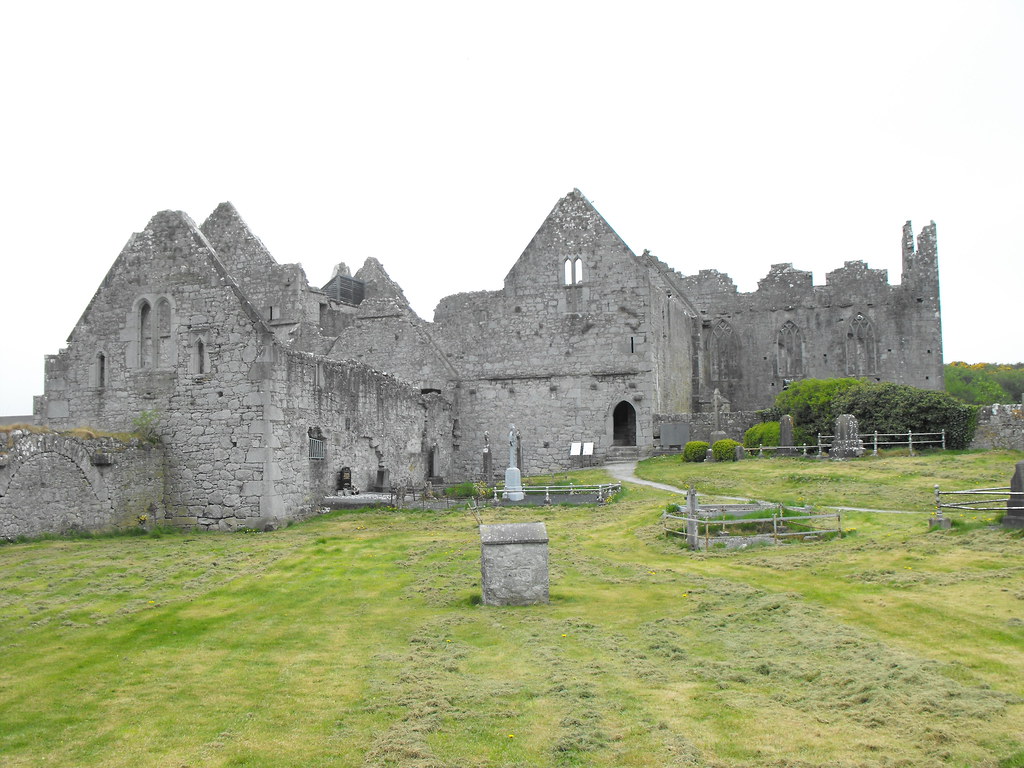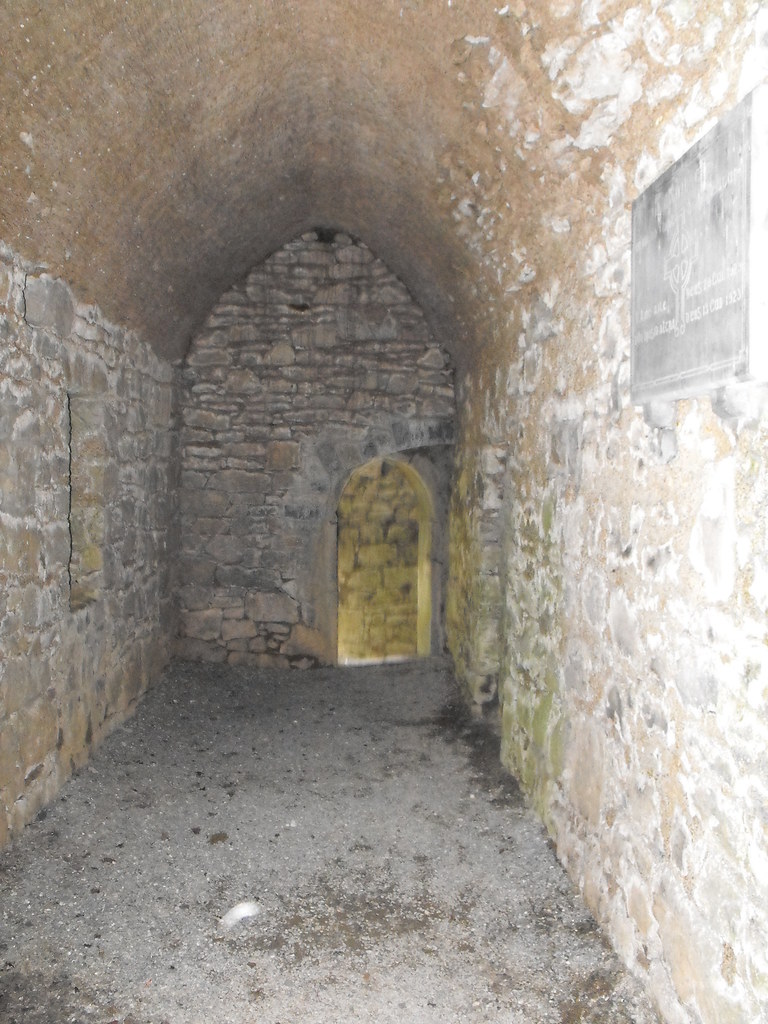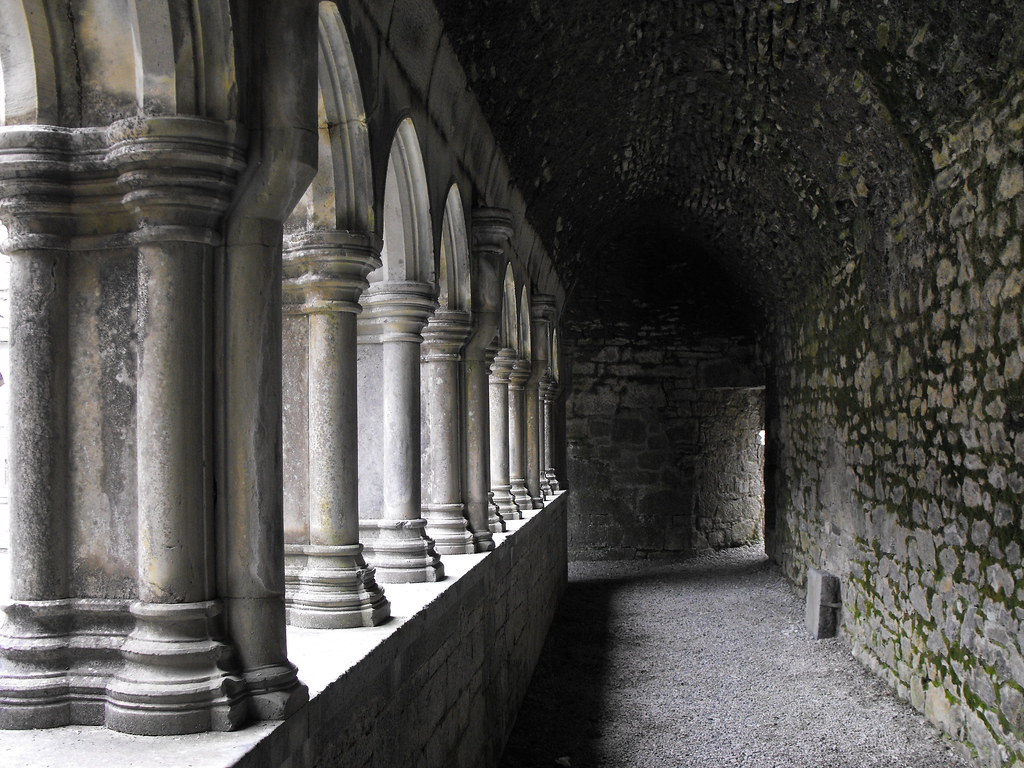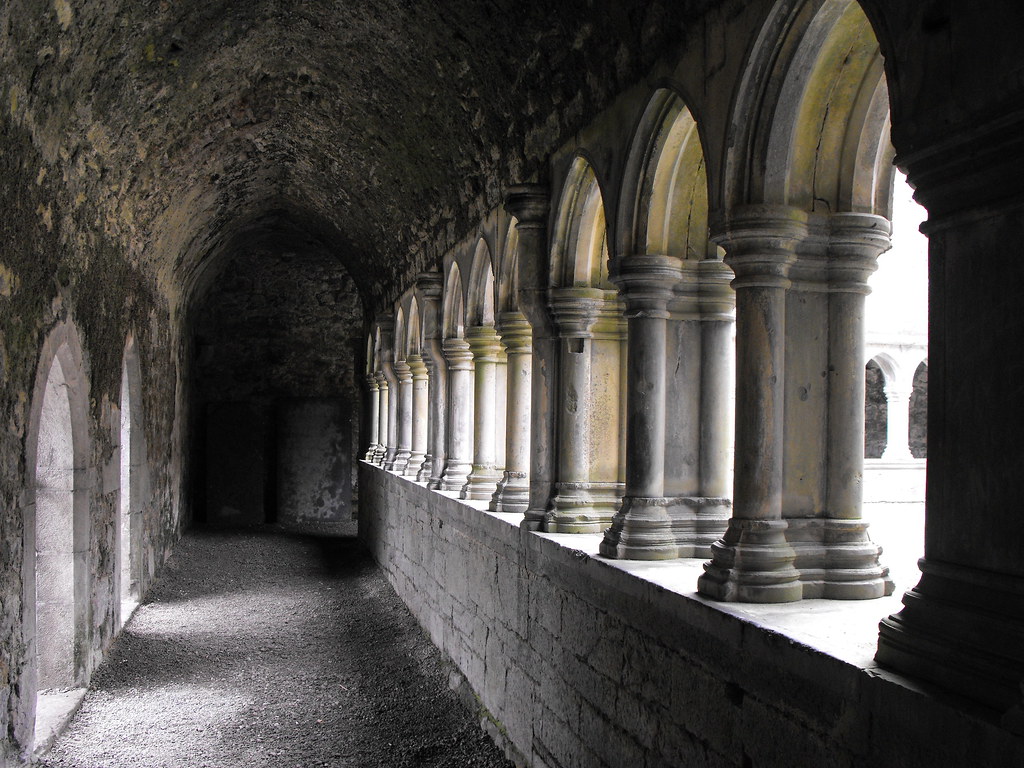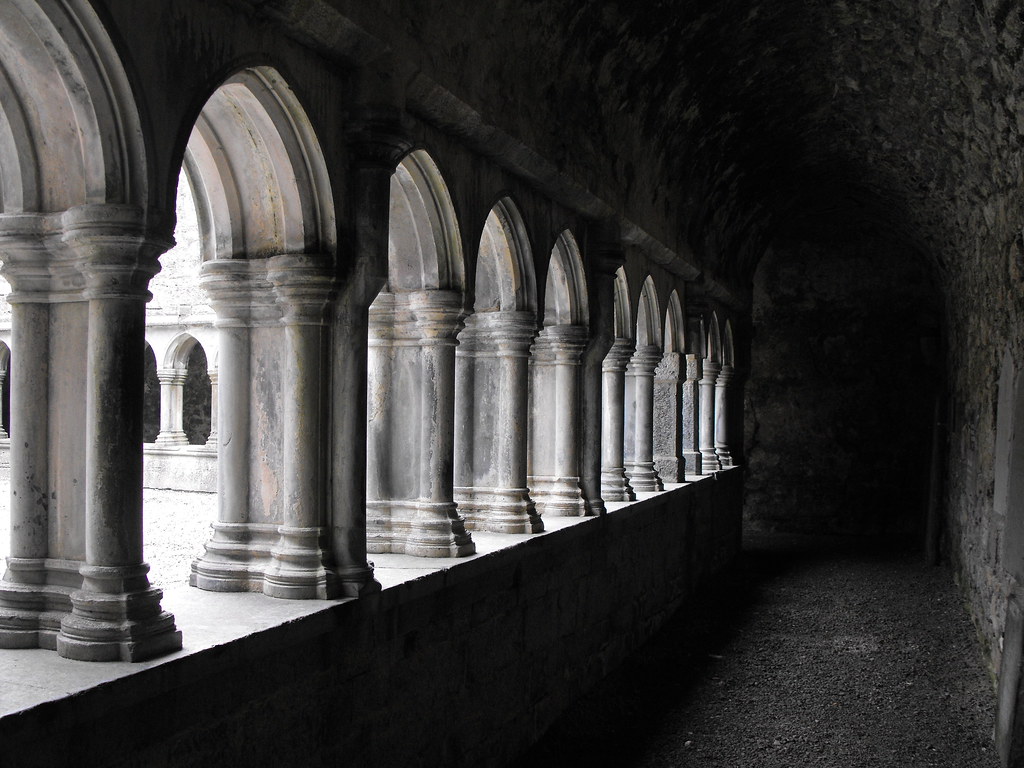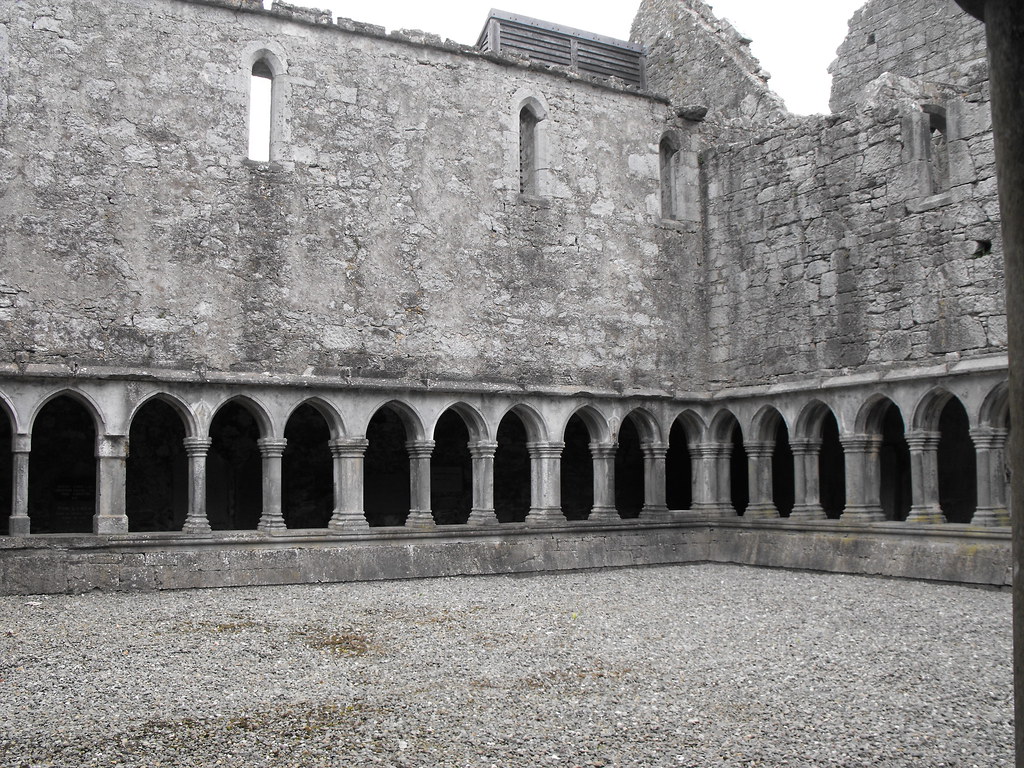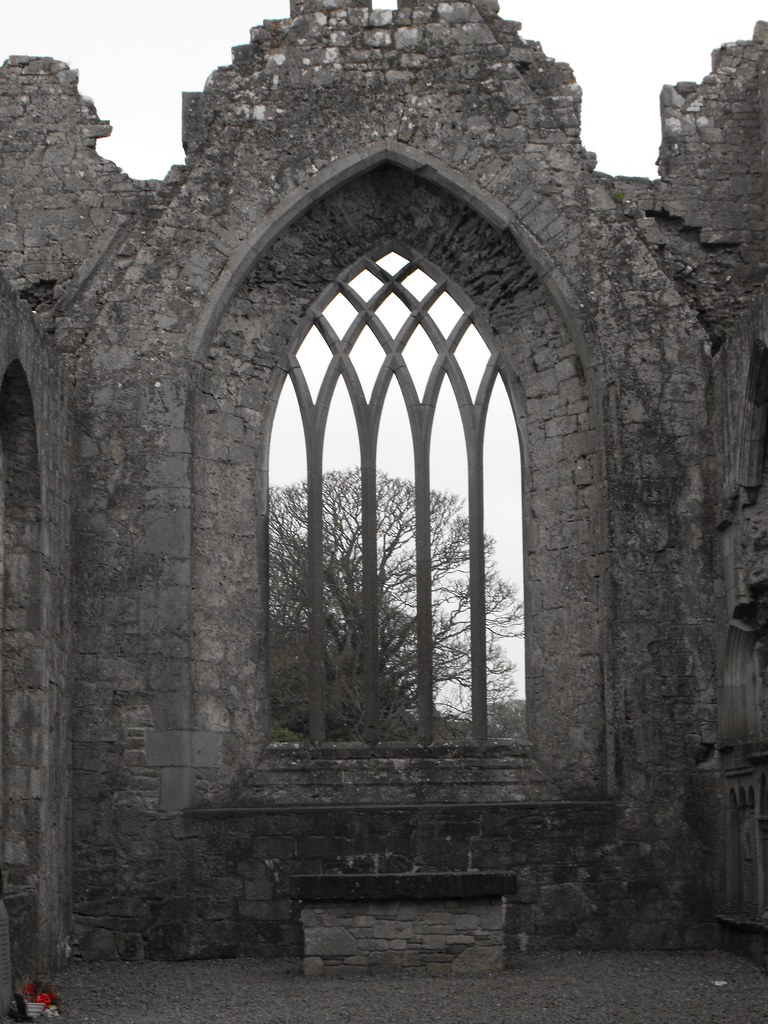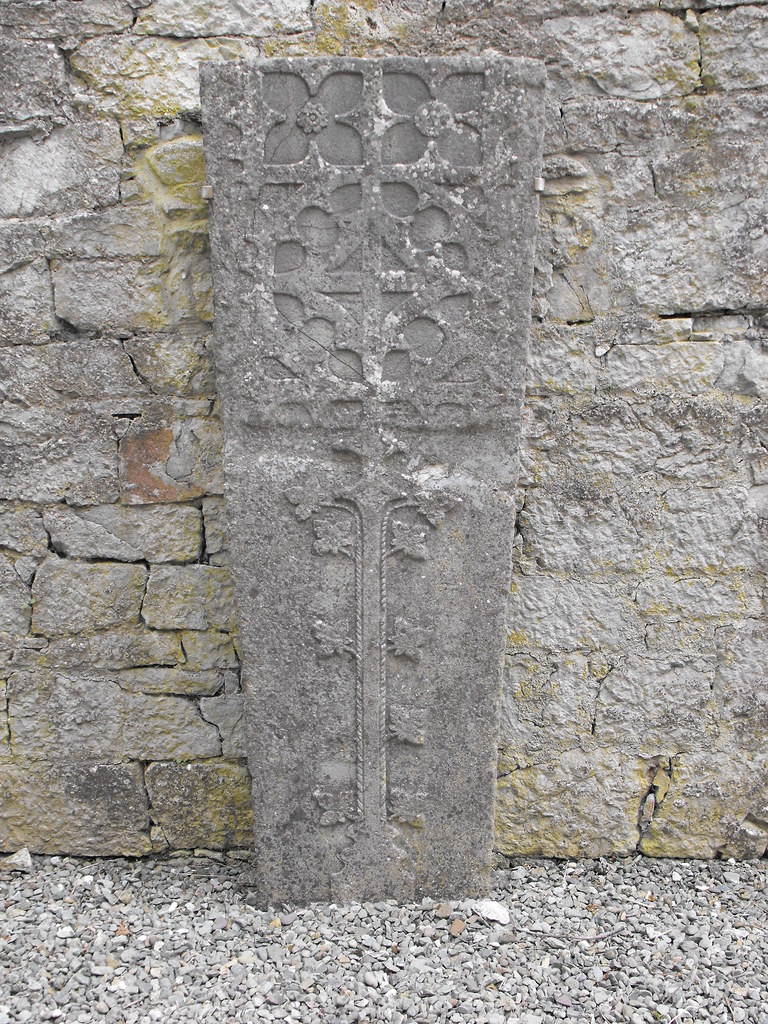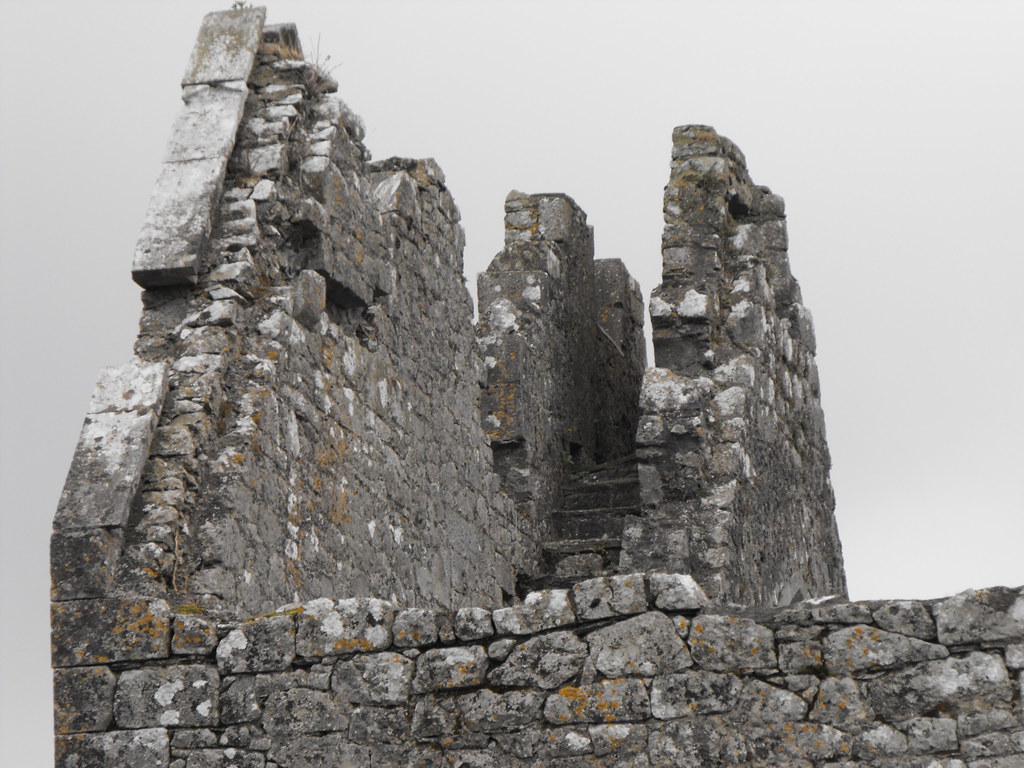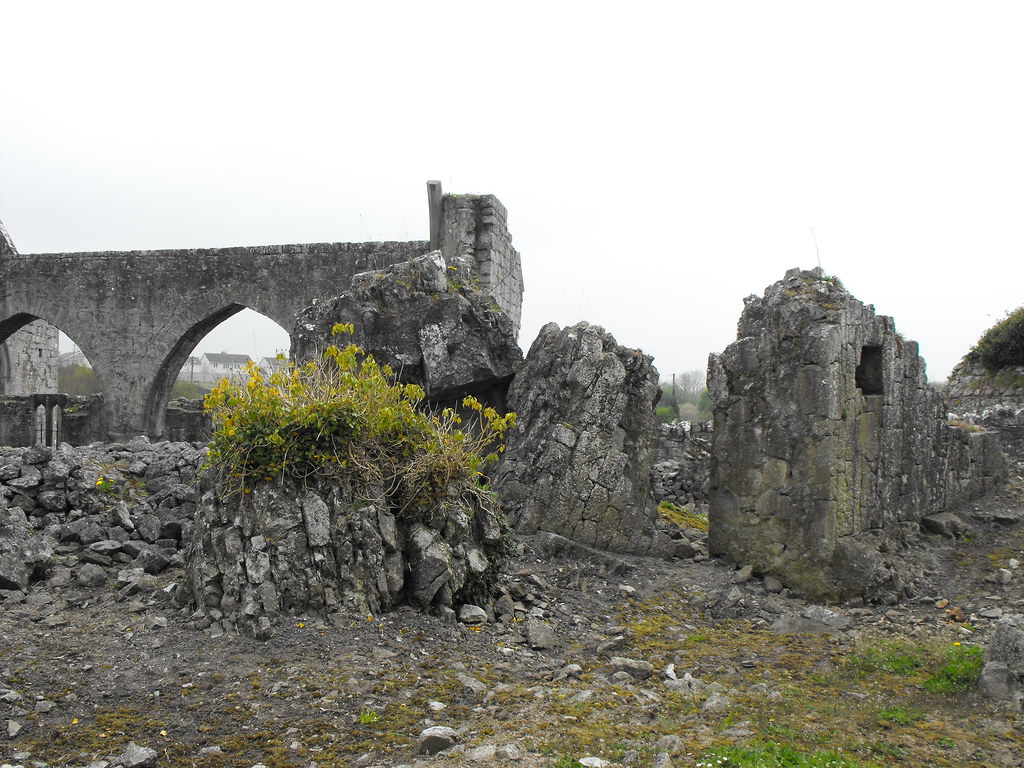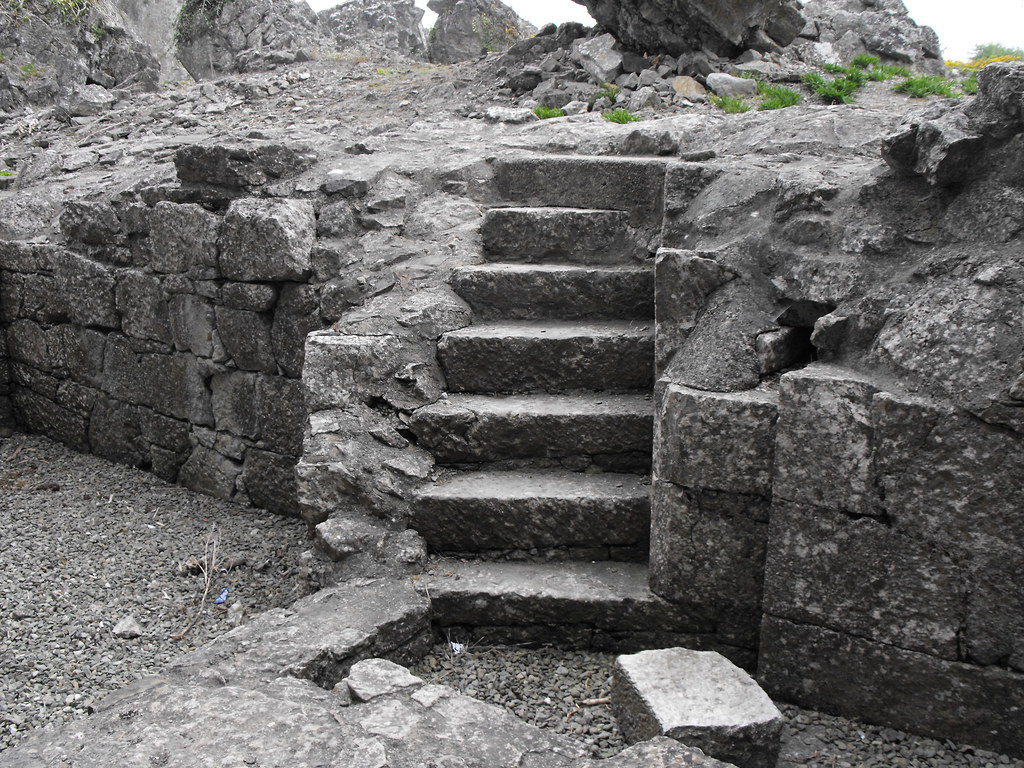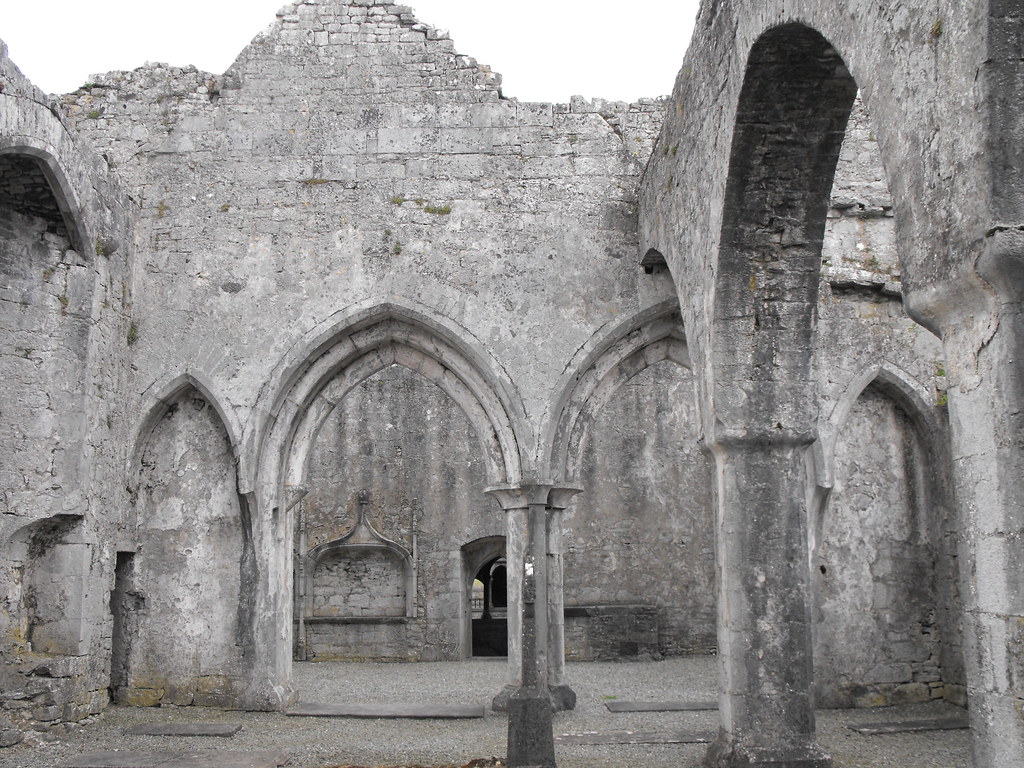Location – In Askeaton town on the River Deel and just S of the N69. As you head into the town from Limerick turn right just before the bridge and the friary is along that road on the left hand side.
OS: R 339 507 (map 64)
Longitude: 8° 58' 28.1" W
Latitude: 52° 36' 12.38" N
GPS: R 33986 50679 (Accuracy: 5m)
See map at the bottom of the page.
Description and History – I saw some pictures of this friary online and made my way there the following weekend but pictures cannot do full justice to this site...it is absolutely fantastic. It has rocketed up my list of favourite places and sits near the top. There is so much to see here and it is all fantastic. A fresco was recently discovered on the upper floor of the cloisters and a wooden structure now protects it until it can be properly conserved. The upper floors are not accessible and neither is the refectory. These are awaiting conservation and will be open to the public following this. Even with the two sections closed there is still plenty to see and it's all very accessible.
OS: R 339 507 (map 64)
Longitude: 8° 58' 28.1" W
Latitude: 52° 36' 12.38" N
GPS: R 33986 50679 (Accuracy: 5m)
See map at the bottom of the page.
Description and History – I saw some pictures of this friary online and made my way there the following weekend but pictures cannot do full justice to this site...it is absolutely fantastic. It has rocketed up my list of favourite places and sits near the top. There is so much to see here and it is all fantastic. A fresco was recently discovered on the upper floor of the cloisters and a wooden structure now protects it until it can be properly conserved. The upper floors are not accessible and neither is the refectory. These are awaiting conservation and will be open to the public following this. Even with the two sections closed there is still plenty to see and it's all very accessible.
It was built between 1389 and 1420 and founded by Gerald, the Fourth Earl of Desmond. In 1579 the nearby castle was under siege from the English commander Sir Nicholas Malby and when he failed to take the castle he attacked the town and burned the friary killing the majority of the friars. The friary would lay dormant for fifty years and friars returned in 1627 but the community did not reach its former numbers until 1642. This was a short lived community as the friars once again abandoned the site in 1648 when Cromwell’s forces neared Askeaton. The friars returned in the 1650’s with the help of Richard Stephenson who was a leading member of the Confederate Irish Forces. As a reward for helping the friars he and his family were granted a tomb within the church grounds. This tomb is located near the altar but part of the Latin inscription is now missing. The friary finally closed its doors in 1740 in the same year that the Hellfire club opened in the grounds of the nearby castle. Mass is still occasionally celebrated in the church. The site is centred on the wonderful cloisters which have 12 arches on each side. Two of the pillars were stolen in the 19th century and have been replaced albeit in a different style. Apart from this they are complete and a fantastic sight. On the NE corner of the cloisters is a small medieval carving of St. Francis of Assisi complete with stigmata (the wounds that Jesus received on the cross). The face is rather worn because it was believed that kissing the statue would cure toothache. Also on the N side of the cloister is an interesting carved sun-dial and an inscription that reads "Beneath lies The Pilgrim's body, who died January 17th, 1784". The story attached to it is the stuff of fairytales and revolves around an Italian vendetta. It is a quite a long story and can be read by clicking here.
The church attached to the cloisters is particularly large and about 50m in length and 15m wide. A small carving of St Patrick is located high up on the Eastern end of the N wall. A small sacristy sits behind the Northern wall along the fallen remains of the bell tower. The transept contains many modern burials. The kitchens, complete with stone oven, can still be accessed to the E of the cloisters. This really is one of Ireland’s most impressive ecclesiastical sites and I cannot believe that it is not crawling with people but every time I have been there it has been empty and yet it is so easy to access. Fantastic site.
Difficulty – There’s no difficulty at all in visiting this site. It has parking and is open from 9am until 6:30pm every day. A very family friendly site.
For more ecclesiastical sites, click here.
For more sites in Co. Limerick, click here.
View as you enter the surrounding graveyard. Difficulty – There’s no difficulty at all in visiting this site. It has parking and is open from 9am until 6:30pm every day. A very family friendly site.
For more ecclesiastical sites, click here.
For more sites in Co. Limerick, click here.
Inside the kitchen.
The stone oven.
The beautiful cloisters.
The worn figure of St Francis.
In the church looking into the chancel.
Looking into the nave.
Beautiful window in the main church.
The figure of St. Patrick.
There are many beautiful medieval grave markers throughout the site.
The sacristy.
Wall walk above the chancel wall.
The fallen bell tower.
Steps to nowhere.
The transept.
View The Standing Stone in a larger map

